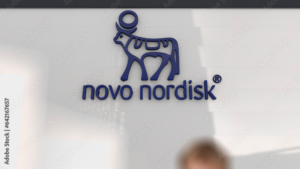
AZ’s baxdrostat mets endpoint in resistant hypertension
AstraZeneca’s baxdrostat cuts 24-hour systolic BP by 14mmHg in resistant hypertension, offering a novel mechanism and major market potential.
AstraZeneca plc has released full results from the Phase III Bax24 trial, evaluating once-daily 2mg baxdrostat versus placebo in adults with treatment-resistant hypertension. The data cover the reduction in ambulatory 24-hour systolic blood pressure (SBP) as well as safety and tolerability. Topline results were first reported in October 2025.
The study demonstrated that baxdrostat achieved a statistically significant and clinically meaningful reduction in ambulatory 24-hour SBP compared with placebo at 12 weeks. Notably, efficacy was observed throughout the full 24-hour period, including early morning hours, when hypertensive patients face higher cardiovascular risks. At 12 weeks, the placebo-adjusted reduction in SBP was 14.0mmHg, and 71% of baxdrostat-treated patients achieved a 24-hour SBP below 130mmHg, compared with 17% in the placebo arm. The treatment was generally well tolerated, consistent with safety observations from the earlier BaxHTN trial.
Novel mode of action
Baxdrostat is a selective aldosterone synthase (CYP11B2) inhibitor, reducing aldosterone production in the adrenal glands. By lowering aldosterone, it addresses a key driver of hypertension, including sodium and water retention, blood volume, and vascular resistance. Importantly, baxdrostat spares cortisol synthesis (CYP11B1), minimising off-target hormonal effects. This represents a new mechanism in antihypertensive therapy, unlike traditional treatments that target renin-angiotensin pathways, calcium channels, or mineralocorticoid receptors.
Significant for treatment-resistant patients
Patients with treatment-resistant hypertension—defined as uncontrolled blood pressure despite three or more antihypertensives, including a diuretic—represent a large unmet medical need. In BaxHTN, roughly 73% of participants fell into this category. The substantial SBP reductions and high target attainment indicate baxdrostat could effectively address patients who do not respond to existing therapies.
Market potential
Hypertension affects over 1.3 billion people globally, with about 50% of treated patients in the US failing to achieve adequate blood pressure control. Resistant hypertension is estimated at 10–20% of the hypertensive population, representing a substantial commercial opportunity. Analysts at UBS estimate that baxdrostat has peak sales potential of around US$4bn, reflecting its novel mechanism and effectiveness in hard-to-treat patients. AstraZeneca’s own expectations point toward a US$5bn peak annual revenue, underlining the significant commercial potential of the therapy.
Outlook
While the results are compelling, long-term data on efficacy and safety, particularly in truly resistant populations, remain limited. Outcome data for hard endpoints such as cardiovascular events and kidney function are still pending. Ongoing studies are also exploring additional indications, including chronic kidney disease and heart failure prevention. AstraZeneca has publicly indicated plans to submit a New Drug Application (NDA) for baxdrostat by the end of 2025, with potential approval in the US and Europe expected in 2026.


 BioMed X
BioMed X Maxwell Hamilton - wikipedia.org
Maxwell Hamilton - wikipedia.org Adobe stock - maurice norbert
Adobe stock - maurice norbert